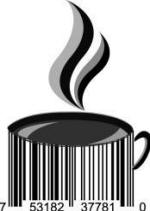Natural Bar Codes: Decoding the DNA of Fresh Foods
 Did you ever stop to think that bar codes could take other forms in your everyday life? While these combinations of light and dark bars have a very specific purpose, allowing for quick and easy automatic identification of everything from grocery items to hospital patients, they were created to give order to things without obvious labels.
Did you ever stop to think that bar codes could take other forms in your everyday life? While these combinations of light and dark bars have a very specific purpose, allowing for quick and easy automatic identification of everything from grocery items to hospital patients, they were created to give order to things without obvious labels.
And while supermarket items - think produce - receive bar code stickers so that cashiers know how much to charge for them, the bar codes don't really tell you much at all about the food's provenance.
The advent of a global food supply means food can arrive at the local grocery after being grown or produced hundreds or thousands of miles away. And knowing whether what you're eating is really what's on the label can be a challenge for the most knowledgeable among us. Recent instances of food fraud - including mislabeled fish, olive oil, and honey - cloud the picture even more.
That's where a Silicon Valley company called Picarro hopes to fill the void, with something known as an optical stable isotope analyzer. The name is a mouthful, but in simple terms, the device detects isotopes like hydrogen, oxygen, and carbon.
Isotopes - variations on common atoms - are present in every food we eat. And the chemical composition of varieties of the same food will show very, very small differences that couldn't be detected any other way.
The analyzer already detects gas leaks and measures air quality, and takes the place of the bulky mass spectrometer, something that's out of reach of most companies. The pricetag of Picarro's device comes in around $90,000 compared to a half a million for the spectrometer, and it's portability means that it can go virtually anywhere without a lot of fuss.
Testing is easy, simply feed a small amount of the food substance into the machine, with no preparation. And each test costs a dollar or less. Picarro reports test results from the analyzer that have differentiated grass fed and corn fed beef and the origin of different types of oils.
While this isn't the traditional bar code that you're used to seeing, the so-called "nature's barcode" could revolutionize food testing, ensuring that what you put in your mouth isn't a cheap or even dangerous substitute for the real thing. That's good news for everyone on the planet.
Related articles:
Dymo Labelwriter 400: Bar Code Labeling For Labs
Total Bar Code Scanning Solution From Honeywell At NRF 2012
How to Create a Bar Code in Microsoft Excel
{jcomments on}
